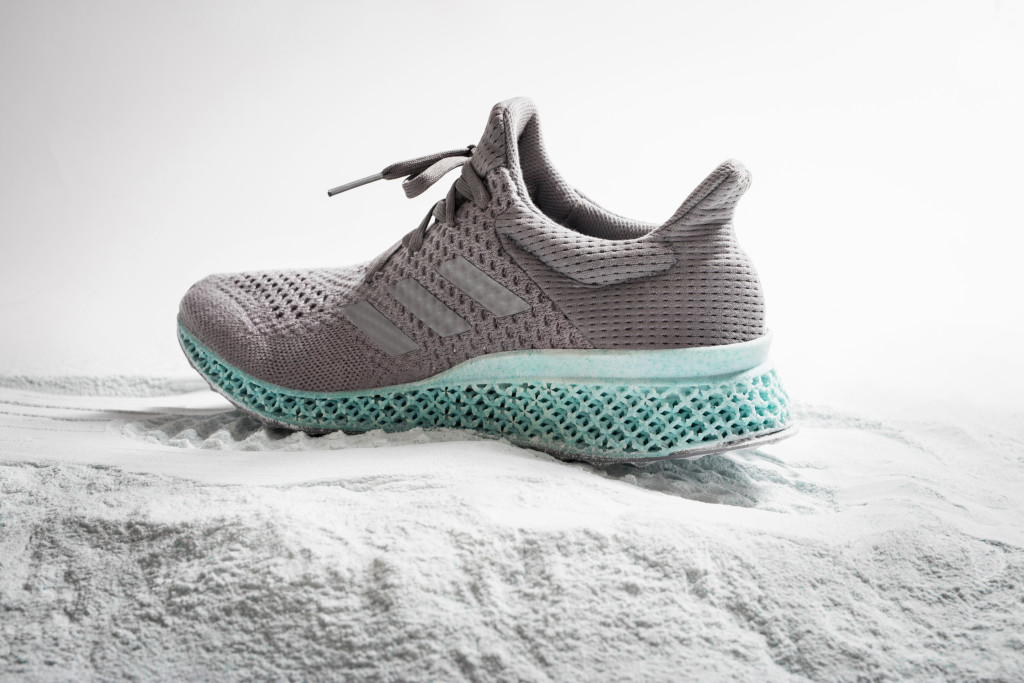10 WAYS MEN’S RETAIL IS BEING REINVENTED


By Deborah L. Weinswig
In my 17-year career as a retail analyst, 2016 has turned out to be the most interesting and exciting time to talk about the men’s retail sector. Imagine a shopper researching the latest Artificial Intelligence (AI)–powered product recommendations on his mobile phone, then walking into a store and picking up a pair of 3D-printed shoes presented by an in-store robot. When the shopper uses his mobile payment app to check out, he is greeted with a personalized message. In some places, this is already possible.
This is an exciting time in retail, and significant advances in technology are changing how men (and women) shop. Retail is being reinvented, which creates significant opportunities. Here are 10 major retail and technology trends that are going to shape the future of not only the men’s retail sector, but retail overall:
1) MEN HOPPING ON THE ATHLEISURE BANDWAGON
Men have always prioritized comfort and functionality in their wardrobes. T-shirts and jeans have been staples of men’s shopping lists for decades. With the casualization of workplace dress codes, casualwear and athleisurewear have become even more popular. We have seen new brands emerge as a result, such as Betabrand, a fashion startup known for its casual workwear, “dresspants sweatpants” and “suitsies.” Established athleisure brand Lululemon posted a 21 percent increase in sales in its most recent quarter, which was its sixth consecutive quarter of growth above 15 percent. The company’s innovation of fabrics and styles in the men’s sweatwear category was a key growth driver, and its men’s business is expected to reach $1 billion in revenue by 2020.
2) AMAZON EMBRACING FASHION
Amazon is marching into fashion, offering its own private-label brands. Amazon Fashion private labels are Prime eligible and can be delivered to Prime customers within two days. The various brands’ price points put them in direct competition with traditional department store brands. The Amazon’s men’s shoes brand, Franklin & Freeman, offers more than 180 products with price points around $100. Franklin Tailored, its men’s business attire brand, offers more than 250 products, most of them priced under $300.
3) 3-D PRINTING ENABLES PERSONALIZATION
Personalization, particularly in footwear, is in high demand, and 3D printing is one solution. Traditionally, shoes have been manufactured as multiple parts, using molds and hydraulic presses, and then manually assembled into the final product. But shoe manufacturers have started to use 3D printers to manufacture parts of shoes, such as the midsoles. Under Armour’s Architech sneakers and select Adidas and New Balance styles are made using 3D printing. The technology may soon evolve to the point where a customer can use an app to scan his feet, and then send that information to the cloud, where it will be translated into a unique design. The customized shoes would then be 3D printed and sent to the customer’s home.
4) SUBSCRIPTION SERVICES TARGET MEN
The subscription industry is estimated at $3 billion, and subscription boxes are popular because they provide convenience and an element of surprise to consumers. Men’s razor subscription startup Dollar Shave Club has attracted more than 3.2 million members and will generate an estimated $240 million in revenue in 2016. Manpacks is a quarterly subscription service for men that offers underwear, socks, toiletries and products for other basic needs. Styling subscription company Trunk Club mails customers a handpicked selection of clothes based on the customer’s profile. Interestingly, socks are a hot category for subscription. There are several monthly subscription services for socks, including Sock of the Month Club, Sock Panda, Socked and Soxiety.

5) THE RISE OF MEN’S ONLINE CONSIGNMENT SHOPS
Online consignment is estimated to be a $34-billion industry, according to ThredUP, and SnobSwap says it is growing at 10 percent annually. Some newcomers, including The RealReal, Poshmark and Tradesy, have made consignment more convenient and transparent. Shoppers are getting more residual value online than from a neighborhood consignment shop. Total funding over the past five years has surpassed $500 million. Venture capital is fueling the sector’s growth, and investors poured hundreds of millions of dollars into fashion resale in 2015 alone. There are a few online consignment shops dedicated to menswear. Eliot Mens is an online platform for pre-owned men’s designer clothes and accessories. The site sells authenticated merchandise from major brands such as Acne Studios, Thom Browne, Marc Jacobs, Ralph Lauren and J.Crew. Menswear-Market.com is another consignment site for luxury brands.
6) WEARABLES HAVE BECOME MORE MAINSTREAM
The market for wearable devices will reach $70 billion in 2025, up from $20 billion in 2015, according to IDTechEx, and International Data Corporation predicts that shipments of wearables will reach 110 million units in 2016. The golden rule in the wearables market is that products must solve a genuine problem or provide real convenience to consumers. Google recently released the result of its Project Jacquard collaboration with Levi’s: a Levi’s-style jacket with added connectivity that allows wearers to control their music, answer phone calls and use navigation technology.
7) ARTIFICIAL INTELLIGENCE: SMARTER THAN A PERSONAL STYLIST
AI uses software to solve problems in ways similar to the human brain. In retail, AI is often used to analyze a shopper’s historical purchase patterns in order to provide personalized product suggestions. Lewk is a menswear subscription box service powered by algorithms rather than human stylists. The fashion startup relies on a comprehensive survey that asks customers about their preferred fit, job inspirations and favorite cities in order to curate a box of two items for $79 a month or four higher-end items for $399 a month. AI Supply uses AI to predict the likelihood of customers making returns, and provides last-minute alternatives that are less likely to be returned.
8) GAMIFICATION ENGAGES SHOPPERS
Market research firm Mind Commerce estimates that the global gamification market will reach $10 billion by 2020, growing at a CAGR of 42.4 percent. Almost 60 percent of US video gamers are male, and incorporating games into men’s shopping experiences could increase customer engagement and loyalty. Men’s fashion site Bonobos started using gamification in three of its marketing campaigns. It embedded images of models dressed in its signature pants on a design network website and gave the first 50 people who located these images a $25 Bonobos credit and free shipping.
9) THE STORE BECOMES AN EXPERIENCE
Stores are increasingly becoming opportunities for retailers to engage with shoppers. You may not know what it is by name, but you have seen it, heard it, smelled it, felt it, tasted it and touched it. We define Experiential Retail as a shopping experience that somehow engages the customer’s senses to create a memorable brand experience. It is changing the way consumers shop, the way retailers market and advertise, and the way malls are conceived and built. While there are plenty of activities and offerings designed to engage female shoppers (such as makeup classes, hair salons and cooking seminars), fewer experiential retail offerings cater specifically to men. There is a huge opportunity to provide pampering services for men, and inviting them to personal in-store fitting events would be a good start.
10) AUGMENTED REALITY (AR) AND VIRTUAL REALITY (VR): THE NEW REALITY
Research firm Markets and Markets forecasts that the combined AR and VR markets will reach $151 billion by 2022, and the retail applications of AR and VR are nearly limitless. VR goggles, for example, can give customers an enhanced in-store experience. Tommy Hilfiger introduced VR headsets that take shoppers on a 3D-video shopping tour. AR has more applications in virtual fitting for fashion. The technology is able to reduce return rates significantly by using 3D body scanning and augmented fitting for shoppers.
Deborah L. Weinswig is the Managing Director at Fung Global Retail & Technology.



